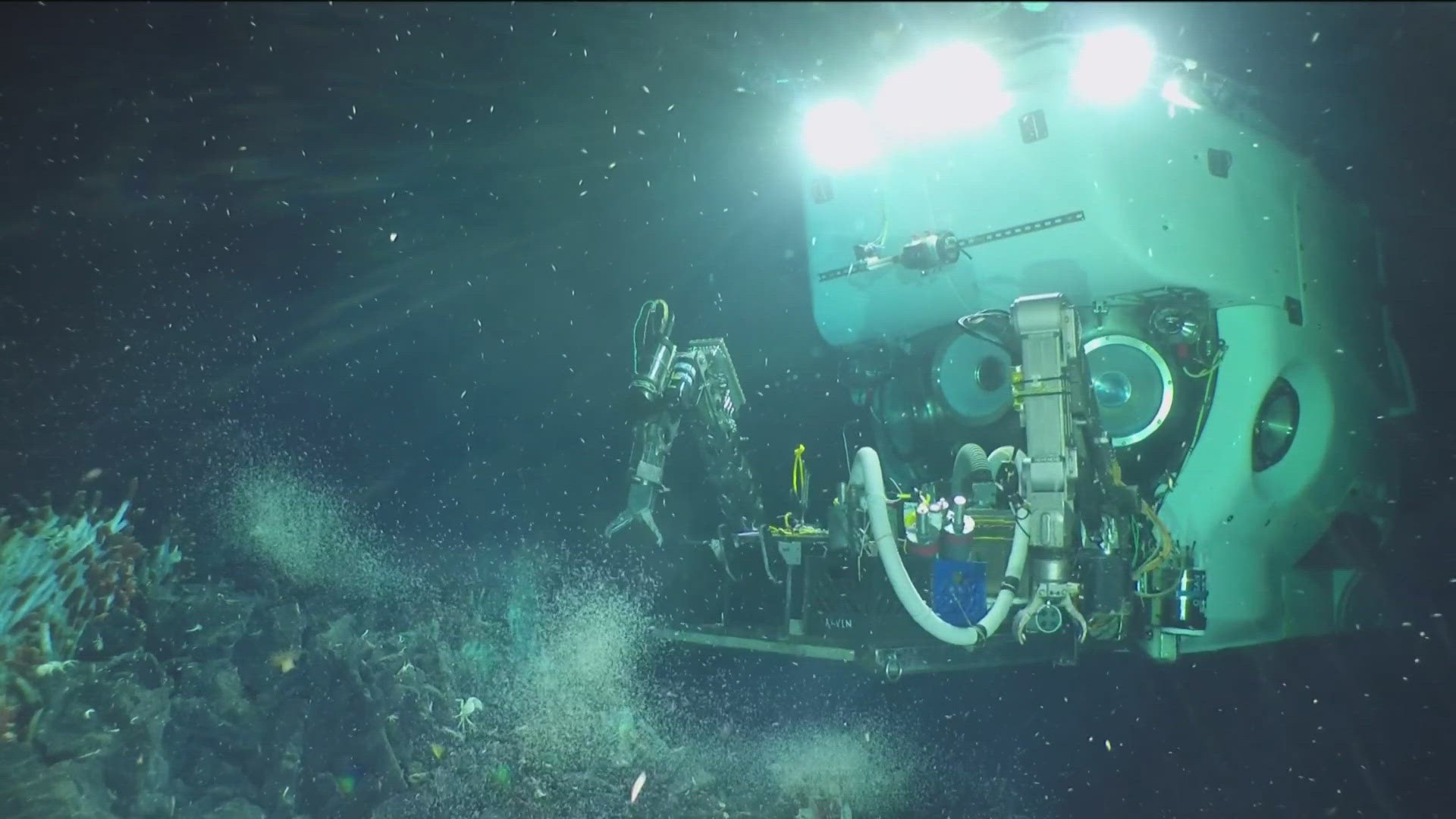SAN DIEGO — Scripps Oceanography Scientists are set to take their deepest dive yet. Scientists will travel more than 16,000 feet down to explore how methane is impacting our marine life and how it could even help climate change above the surface.
It's currently sitting off the coast of Point Loma.
It was named after an engineer and geophysicist who helped pioneer research expeditions like this. Since its launch in 1964, Alvin has made more than 5,000 dives, giving more than 14,000 scientists and engineers rare access to the ocean floor.
"This mission is going to usher in a new era of ocean exploration," Tim Shank said, who is a Biologist for Woods Hole Oceanographic Institution.
The expedition will bring two scientists and one pilot to some of the deepest parts of the ocean humans have ever travelled.
"Those are actually windows you look out of, Lisa Levin said, as she gave us a tour of the submersible. Levin is a Deep Sea Ecologist and Professor Emerita at UC San Diego’s Scripps Institution of Oceanography.
The dive is supported by the National Science Foundation and NOAA, the National Oceanic and Atmospheric Administration.
"It's beautiful, it's full of life," Levin said. "Most people think of the deep sea as a big dark hole, but it's heterogeneous."
They'll be about four miles down off the coast of Alaska. The team will explore our deep-sea ecosystems and how marine life and microbe bacteria are interacting with the naturally occurring methane that's seeping from the sea floor. They want to explore how humans could benefit from capturing it.
"Methane is coming out of the ground, along our continental margins, it's a very potent greenhouse gas, and if it gets into the atmosphere it can exacerbate global warming, so we want to know what keeps it from getting into the atmosphere and the answer is the microbes and animals. They basically eat the methane, the microbes do and some of the microbes turn that into rock," Levin explained.
After plummeting into the sea, it'll take two hours to reach the ocean floor and then another two to return to the surface. It leaves scientists with about six hours to collect data using the sub's robotic arms.
"We'll be doing experiments with water, rocks, animals and microbes that come up," Levin said.
"We also need to explore other elements that we think are there, we need them for our cell phones and electronic cars," Shank said.
The Alvin's missions have led to thousands of discoveries including coral reefs and hydrothermal vents. It most notably brought researchers back to the site of the Titanic in 1986.
It can hover in the water, maneuver over rugged terrain, or rest on the sea floor. The sub carries enough oxygen to let a 3-person crew breathe for three days.
"As long as you're not claustrophobic," Levin said. "Alvin is very small. Six and a half feet in diameter, for three people, it's a small sphere!"
WATCH RELATED: Deep sea fishing is back in San Diego

